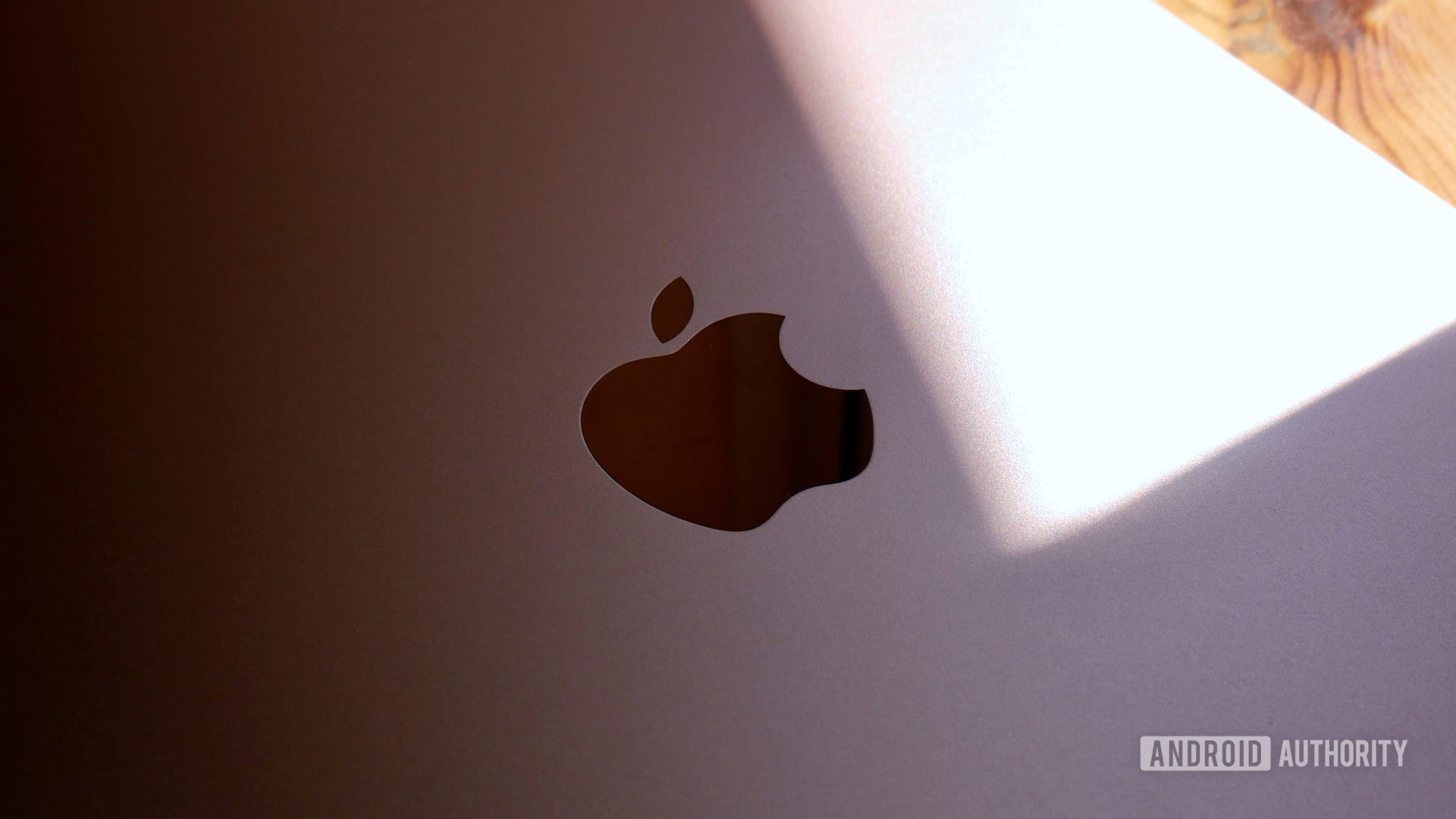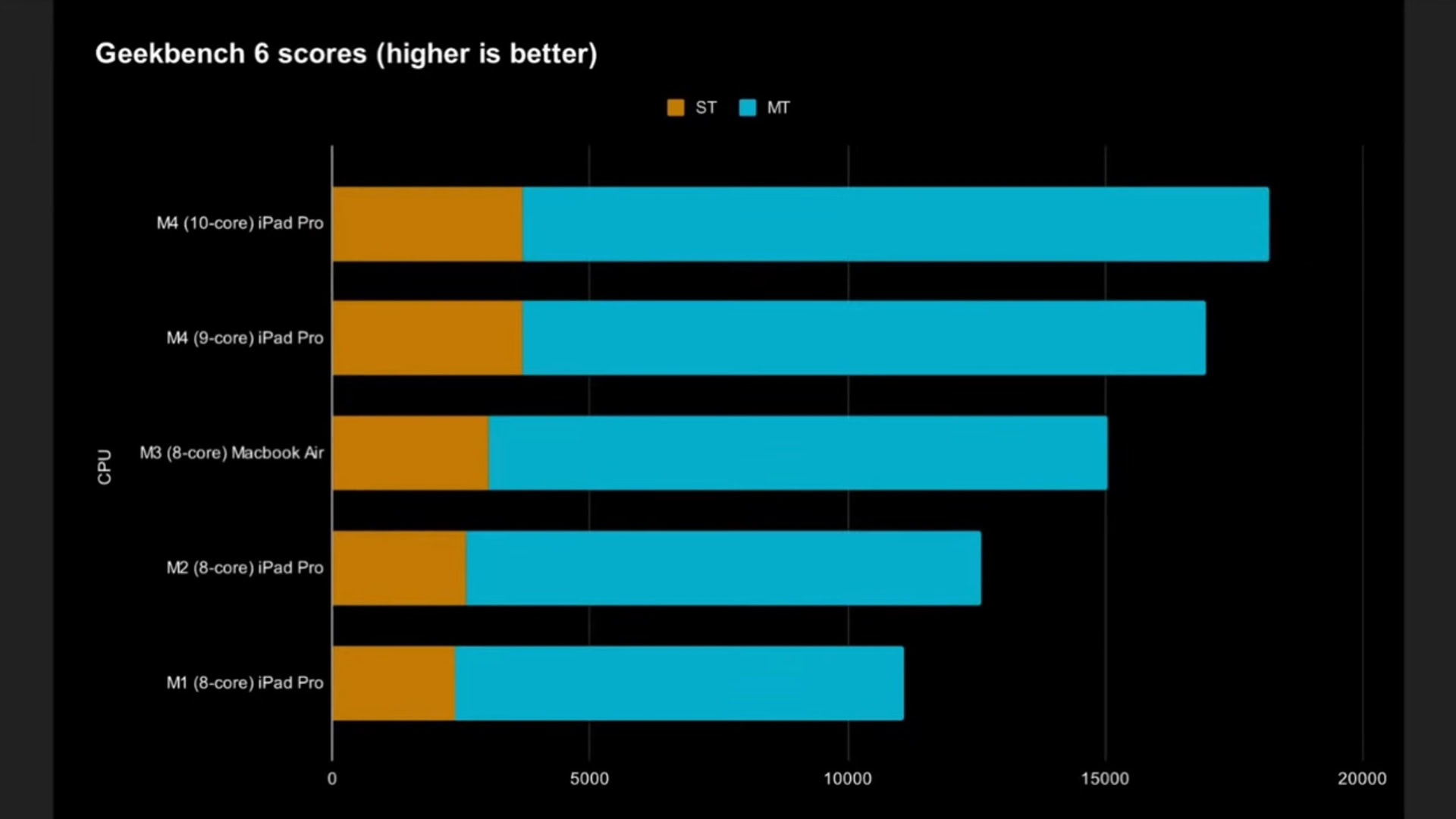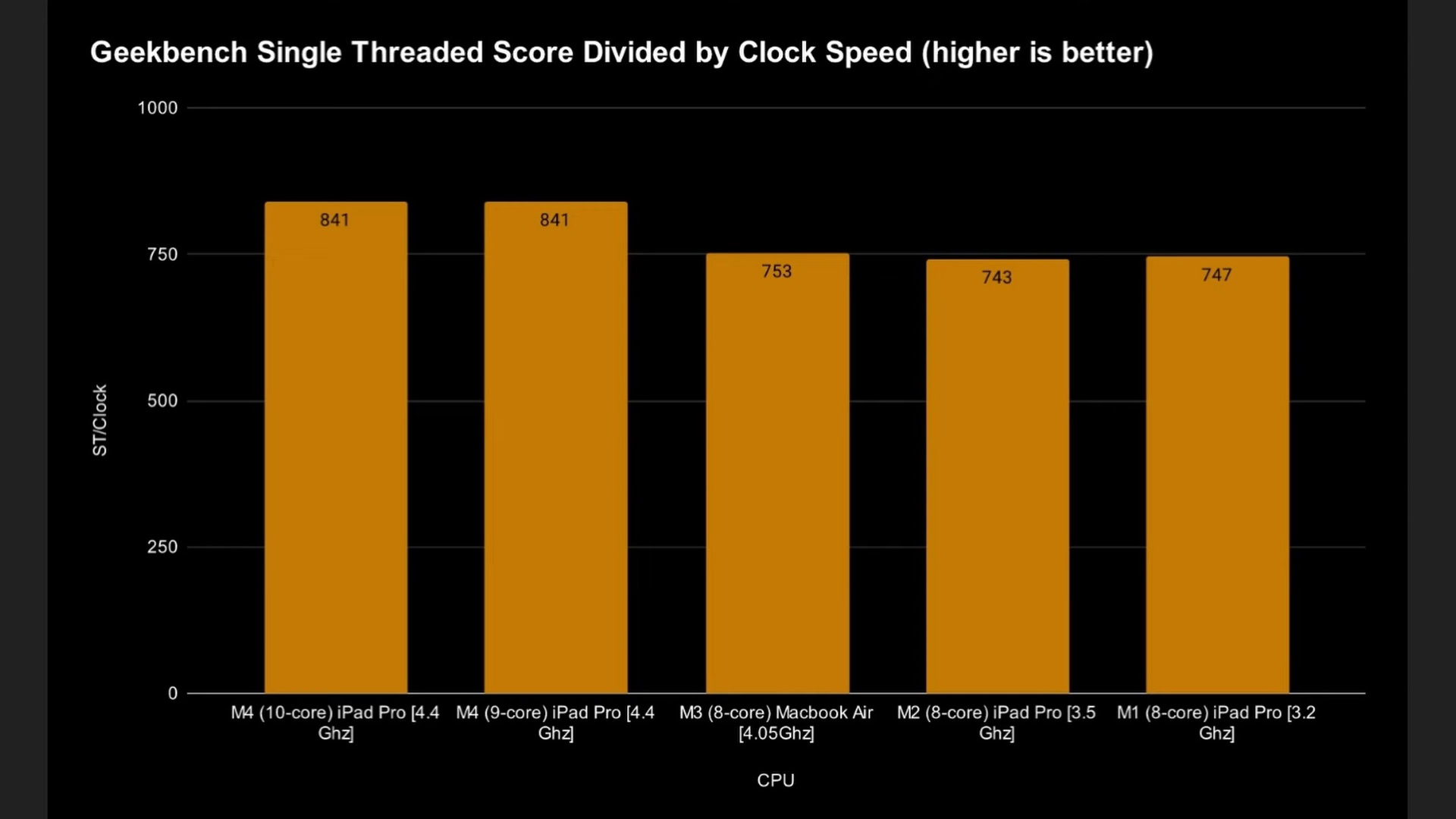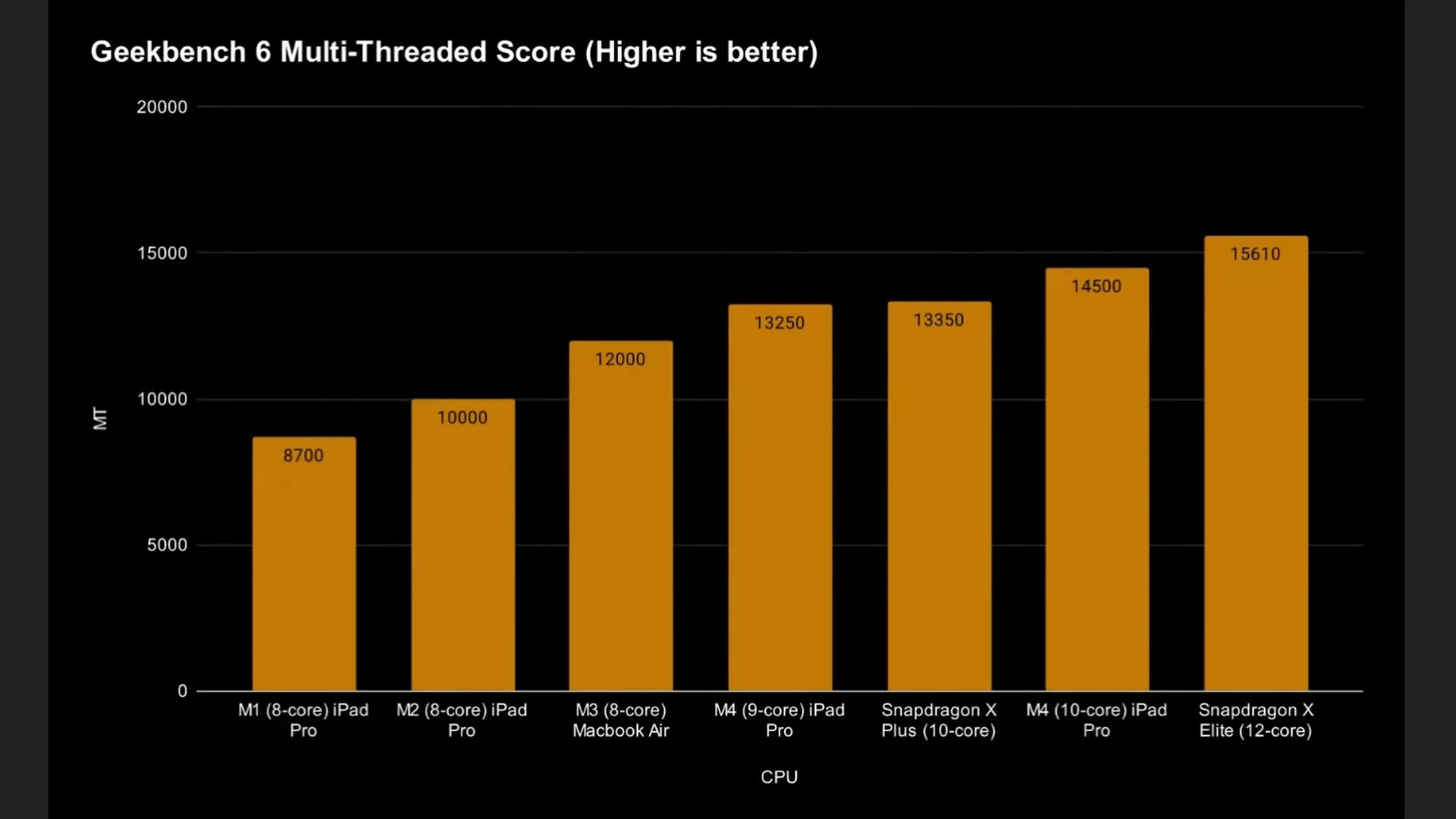Affiliate links on Android Authority may earn us a commission. Learn more.
Apple M4 processor: A deep dive into features and performance
Published onMay 23, 2024
In early May 2024, Apple unveiled its new M4 processor, debuting in the latest iPad Pro rather than a MacBook or MacBook Air. We didn’t know much about the chip at its launch, but after digging deeper and thoroughly investigating it, I’m ready to share my findings. So, if you’re curious about Apple’s latest chip, here’s what you need to know about the Apple M4 processor.
What is the Apple M4 processor?
The Apple M4 processor is the company’s latest topline chip, promising a significant performance leap over the previous generation silicon. The chip has two versions: the topline version boasts ten cores, while the other features nine. Regardless, both are an upgrade over the M3’s eight-core configuration.
The Apple M4 processor is the company's latest topline chip, promising a significant performance leap over the previous generation silicon.
This new setup includes next-generation core features such as improved branch prediction, wider decode and execution engines for performance cores, and a deeper execution engine for efficiency cores. Both core types have enhanced next-generation machine learning (ML) accelerators, which should help Apple keep pace in the generative AI race.
Despite their different core counts, the nine-core and ten-core variants have a boosted clock speed of 4.4GHz and are built using TSMC’s second-generation 3nm process node.
Apple M4 CPU specifications

When you delve into the specifications, you’ll find that the nine-core CPU variant comes with three performance cores and six efficiency cores, available with 256GB or 512GB of storage and 8GB of RAM. This can be limiting for users who need more RAM but don’t require extensive storage. On the other hand, the ten-core variant offers six efficiency cores and four performance cores, 1TB of storage, and 16GB of RAM. On paper, it’s the more flexible chip.
The M4’s microarchitecture has seen significant improvements. Branch prediction, a critical aspect of CPU performance, has been enhanced in both core types. Improved branch prediction reduces the performance blips caused by mispredictions, leading to better overall performance. Additionally, the performance cores feature wider decode and execution engines, allowing for more instructions per cycle, which enhances instruction-level parallelism.
The efficiency cores, meanwhile, have a deeper execution engine, likely resulting in higher clock speeds. This means more clock cycles can occur, with each cycle handling smaller chunks of work, thereby boosting performance.
The M4’s microarchitecture has seen significant improvements.
A standout feature of the M4 is its enhanced next-generation ML accelerators, integrated directly into the CPU. These accelerators support scalable matrix extensions (SME2), enabling efficient matrix multiplication in hardware. This advancement is particularly beneficial for scientific simulations, computer vision, and machine learning tasks. The inclusion of SME2, part of the Arm v9.4 architecture, signifies a major leap for Apple. Both performance and efficiency cores now feature these ML accelerators, ensuring seamless job switching between cores without performance degradation.
The M4’s ten-core GPU builds on the M3’s architecture, introducing dynamic caching, hardware-accelerated ray tracing, and mesh shading. These features, previously found in the M3, are now available in the iPad, promising enhanced graphics performance.
How does the Apple M4 CPU perform?

So, how do all these improvements translate? Our Geekbench 6 scores reveal that the M4 outperforms its predecessors in single-threaded and multi-threaded tasks. The single-threaded scores for the nine-core and ten-core versions surpass those of the M3, M2, and M1. The ten-core version outshines the nine-core variant and previous generations in multi-threaded tasks.

Interestingly, the M1, M2, and M3 show similar performance levels when I normalize the single-threaded scores by clock speed. However, the M4 demonstrates a significant leap, indicating substantial microarchitectural improvements beyond increased clock speeds.

When compared to Qualcomm’s Snapdragon X Plus and X Elite, the M4 holds its ground. The Snapdragon X Plus, with its ten performance cores, slightly edges out the M4’s nine-core variant. However, the M4’s ten-core version competes closely with the Snapdragon X Elite. The true test will come when these processors are available in real-world devices, allowing for comprehensive power efficiency comparisons.
Looking ahead, we can expect various M4 variants, such as the M4 Pro and M4 Max, potentially featuring more cores and higher performance. Additionally, the M4 architecture may make its way into future iPhone models, possibly as the A18 SoC, bringing Arm v9 capabilities to Apple’s mobile devices.
The M4 processor represents a significant advancement in Apple’s chip technology, offering improved performance, enhanced ML capabilities, and robust graphics support. Whether you’re considering an upgrade or simply interested in the latest tech, the M4 is a noteworthy development in the world of processors.